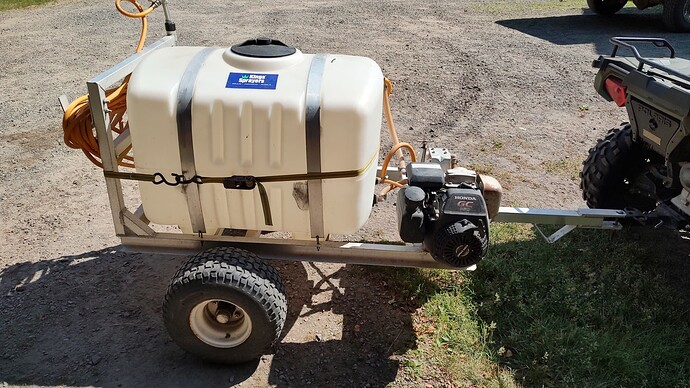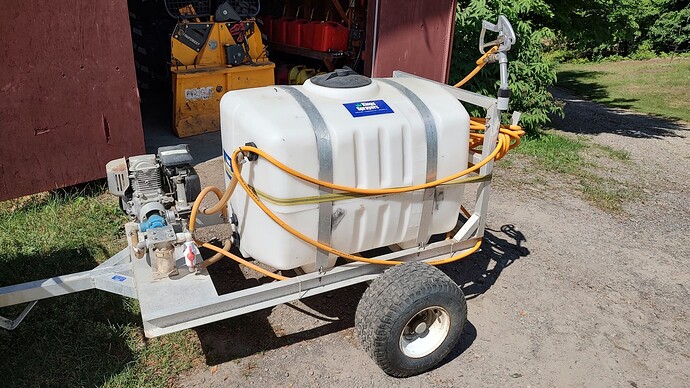I’m surprised your sprayer will spray that high. I’ve owned two electric motor Fimco sprayers and neither one would spray near that high. They would spray about 10 high at the most. I ended up making my own 6’ long wand so that I can spray my backyard trees more easily.
It sounds like they have maybe improved the pumps on the pro model you got. The older pumps wouldn’t take spraying dormant oil (or even oils in emulsifiable concentrates). The oil would ruin the seals after a couple years. I got tired of rebuilding the pump every two years, so I bought a different pump with Viton seals for the current Fimco sprayer I use.
If the manual says it’s OK to use RV antifreeze, then it’s probably OK. But RV antifreeze has alcohol in it. Alcohol can be really rough on some seals, so I wouldn’t use it, unless the manual says it’s OK.
For winterizing our pumps, we pump all the water out that we can, an just run a very small amount of cheap automotive glycol anti-freeze through them. I save the old antifreeze I change from automobiles and orchard tractor and reuse that for winterizing spray pumps.
In terms of cleaning the tanks out, we never do, until the end of the season. If there is a little bit of spray left in the tank, I just use it as a dilute for the next batch of spray. As you get more experience, you’ll find you have less and less left over.

